TRUST ME, I’M A…SHOEMAKER? (1900)
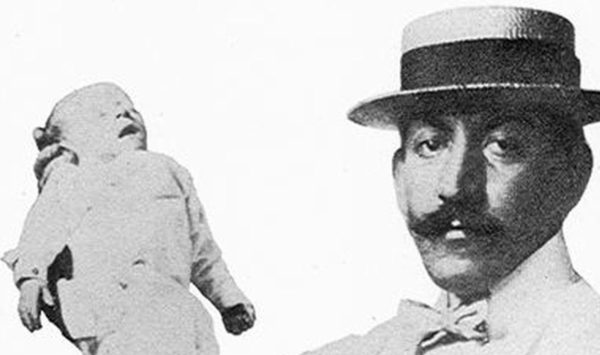
******************************************************************************************************************************** Brownstone Detectives investigates the history of our clients’ homes. The story you are about to read was composed from research conducted in the course of one of those investigations. Do you know the history of YOUR house? ******************************************************************************************************************************** If you stepped into the doctor’s office at 635 Herkimer Street early in 1900, you would have been greeted with the kindly smile of Dr. Walter C. Falk. Dr. Falk would have listened to your heartbeat, asked you a number of questions in a slight German accent, charged you an office visit fee, and then, after disappearing and the reappearing from a back room, prescribed you any number of medications – which he would, of course, sell to you directly. Over the coming weeks, your ailment may or may have not gone away. If it did, it was most certainly not due to the medication for which you paid and took faithfully. For you see, it was very soon discovered that “Dr.” Falk, who had only been in town for approximately eight months, was not a doctor at all. He was a “shoe cutter.” “DR.” FALK, I PRESUME? Falk noted on the 1900 Federal Census that he had been born in Germany in 1848. He was 51 years old at the time and was currently a lodger at the boarding house at 635 Herkimer Street, where he lived with seven other men and a small family. An 1892 New York State Census record, though, showed him living in the town of […]
GIVING BATHS TO BROWNSVILLE (1905)
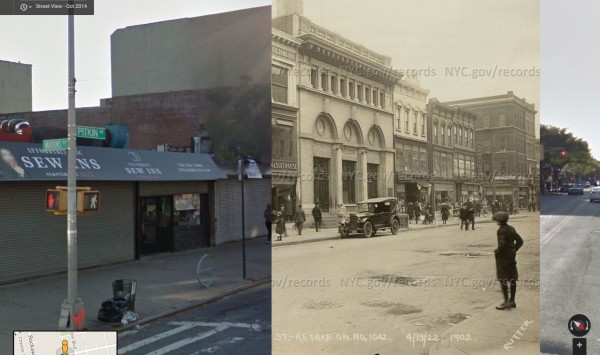
New York City has always been known for its progressiveness. Its mayors and city council seemed always to be trying to improve conditions for the masses – either out of a true passion to do good – or for the votes. In the 1890s, it was all about relieving its citizens from the oppressive heatwaves that were hitting the city by passing out free ice to all who would stand in line for it. At the turn of the century, it would be all about cleanliness and health. THE RISE OF THE BATHS According to 1908’s Modern Baths and Bath Houses, “out of 255,000 inhabitants of tenements…only 306 had bathtubs in the houses where they lived.” This, apparently, was appalling to the better classes which felt that the lower classes had to be scrubbed clean, thereby giving rise to the reference to Saturdays being the bath day. And so the bath house movement began, which was all about improving “the public health, dignity and upward mobility for those living in tenements.” In 1905, Pitkin Avenue’s public baths were opened. According to a blog post by Cory Seamer of Brooklyn Relics, the building used for Pitkin Avenue’s Public Bath is now used for something else: “Designed by architect A.S. Headman, the Pitkin Avenue Public Bath was built in 1903 at a cost of $84,456….the building’s façade has been heavily modified. The ground floor has been partially demolished and retro fitted with a glass storefront, the cornice has been removed and the […]
THE FUR-MAN OF FULTON STREET (1896)
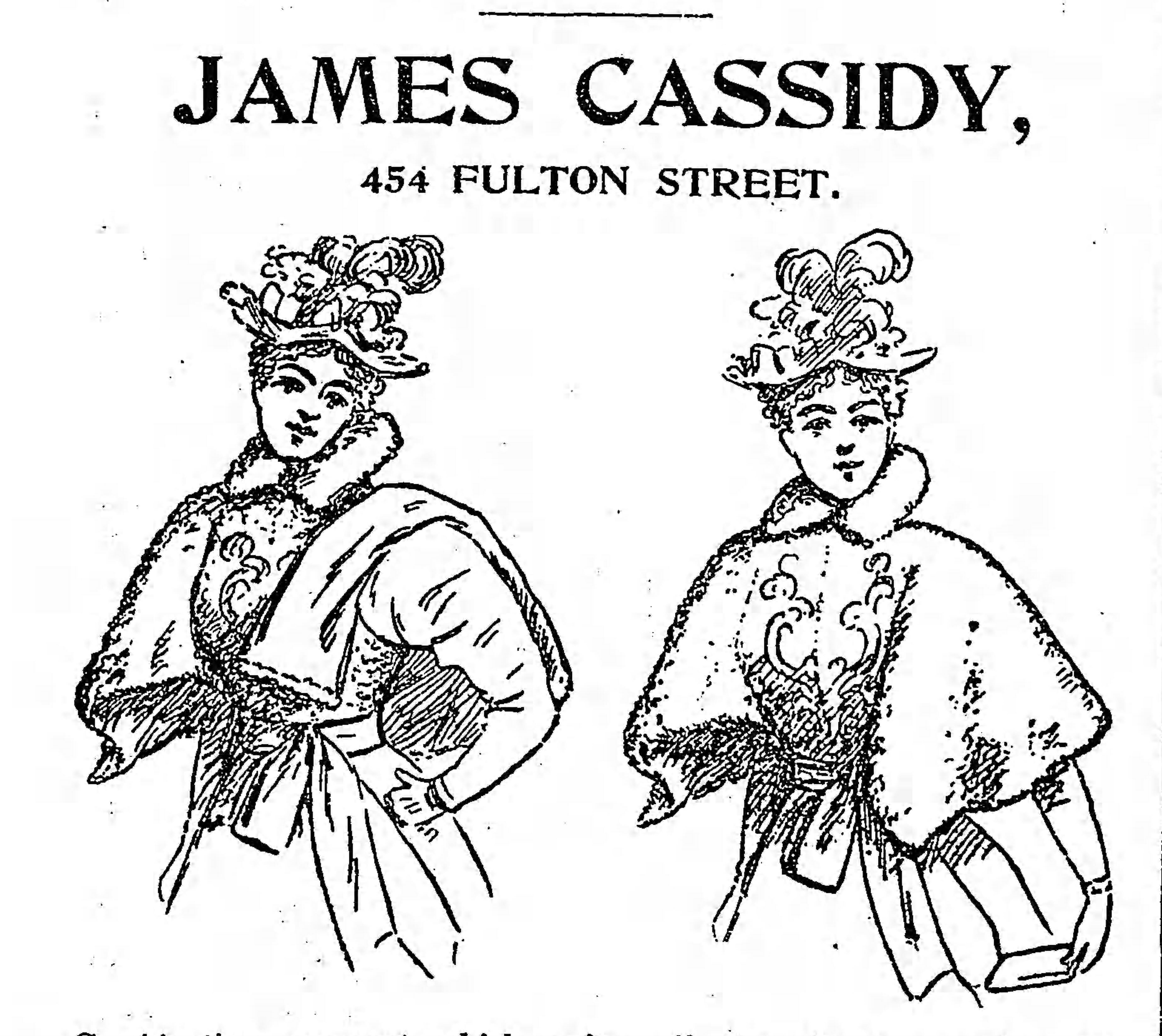
Fur was a big thing 100 years ago. The highest classes of women wore furs and those not as high a class wished to emulate them. There were all types of furs – from lynx, to fox, to otter and seal – even mole, squirrel and Persian sheep! James Cassidy not only sold the finest furs in the latest styles, but he also altered them as the styles changed, repaired them when they became damaged, and then refrigerated them in the summer when they were not in use. After a fur was selected, altered, and sold, it also needed to be cared for. So an entire industry sprang up around their cold storage in the warmer months. Cassidy used the latest in refrigeration techniques – an ammonia refrigerating machine – a freezing method which “far surpasses the old.” With refrigeration at hand within the same building where the furs were sold, an employee of Cassidy’s would simply send a wagon around to their client’s door and pick up their furs, bringing them back to Cassidy to summer in his cold storage. CASSIDY MOVES DOWN FULTON Cassidy’s fur emporium at 454 Fulton Street, a new “four-story brick building” in 1889, allowed him to expand his operations as he moved from his former shop at 277 Fulton Street. He held his grand opening later that year on October 29th. By 1900, Cassidy’s son, James, Jr., was running the business. In 1902, Although Cassidy continued to operate his store from this location, he […]
THE FIREMEN OF DOWNTOWN BROOKLYN (1905)
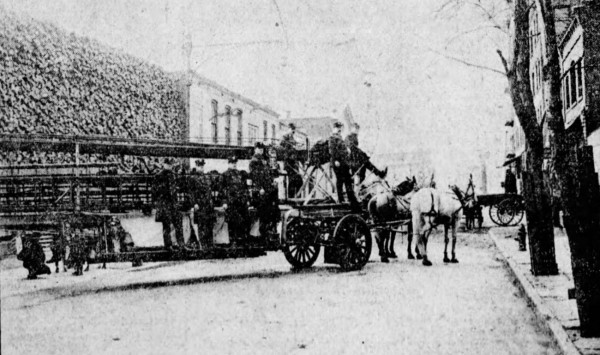
******************************************************************************************************************************** Brownstone Detectives investigates the history of our clients’ homes. The story you are about to read was composed from research conducted in the course of one of those investigations. Do you know the history of YOUR house? ******************************************************************************************************************************** “A Day With the Fire Fighters from Brooklyn” was a newspaper feature spread from 1905. The spread seems to have followed Truck 60, which was located at State and Smith Streets in what was, at the time, known as Downtown Brooklyn, and is now named Boerum Hill . Follow @BrownstoneDetec Share ———————————————————————————————————————– The Brownstone Detectives Brownstone Detectives is an historic property research agency. Our mission is to document and save the histories of our clients’ homes. From our research, we produce our celebrated House History Books and House History Reports. Contact us today to begin discovering the history of your home.
COULD COLORED MEN PUT OUT FIRES? (1898)
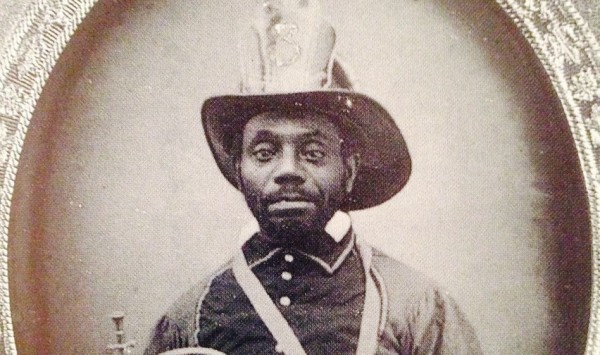
******************************************************************************************************************************** Brownstone Detectives investigates the history of our clients’ homes. The story you are about to read was composed from research conducted in the course of one of those investigations. Do you know the history of YOUR house? ******************************************************************************************************************************** In 1898, a Brooklyn – and New York City – “first” occurred when Fire Commissioner John Jay Scannell assigned the first black man to serve in the Fire Department in Brooklyn. William H. Nicholson, of No. 200 Myrtle Avenue, was a 29-year-old former cement tester who had been born in Virginia. He would become, in a number of ways, the precursor to the many first blacks to be “allowed” to integrate society’s historically “white” institutions in the century to follow. While, in 1891, Wiley G. Overton, another “colored man,” had been the first to be appointed as a patrolman on the Brooklyn police force, Nicholson, as a fireman, was still entering into a conflagration of his own. Patrolman Overton had found his existence on the force to be terminally difficult. Assigned to patrol the Brooklyn “colored district,” he had been transferred around to several precincts because no white officer would sleep in the same dormitory with him. His very presence in every station house had “caused trouble.” Finally, after being subjected to all sorts of “annoyances,” Overton had been “practically hounded from the force” a few years after his appointment. And it was likely that Nicholson knew this. Now, Nicholson had become the Fire Department’s unofficial test case for “colored integration.” […]
BUTCHER, BAKER, UNDERTAKER (1895)
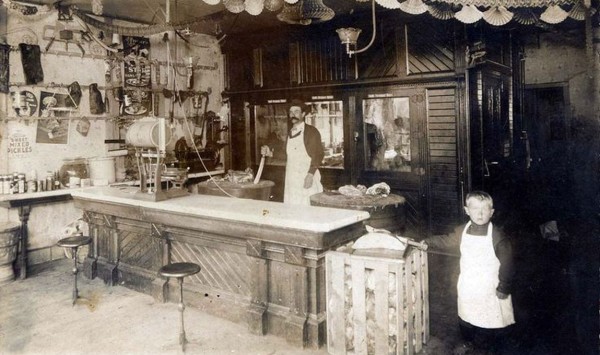
******************************************************************************************************************************** Brownstone Detectives investigates the history of our clients’ homes. The story you are about to read was composed from research conducted in the course of one of those investigations. Do you know the history of YOUR house? ********************************************************************************************************************************As the sleeping giant that is Bedford-Stuyvesant’s Ralph Avenue begins to awaken from its slumber, it is tempting to take a look back at some of the businesses that once lined this bustling thoroughfare. STUYVESANT EAST OF YORE The eastern section of Stuyvesant was alive with industry in the late part of the 19th and the early part of the 20th centuries. As houses had recently been built along the main streets, stores, schools, and churches had gone up along the avenues and on corners, dotting the landscape with their offerings. The neighborhood, after its initial build-up in the 1890s, became completely self-sufficient in terms of goods and services. Residents of Macon Street, like those from the other streets in the neighborhood, found themselves surrounded by a variety of offerings that would allow them – and their servants, in some cases – to satisfy the needs of their families easily and quickly. THE BUSTLING BUSINESS CORRIDOR THAT WAS RALPH AVENUE Starting in the late 19th century, Ralph Avenue became a busy local business corridor filled with a wide variety of shops and stores that suburban families needed to support households of consumers. Since its inception, the avenue had public transportation, in the way of horse-drawn omnibuses and then later a streetcar line, […]
ROASTING CORK IN A “HEIGHTS” FIRE (1907)
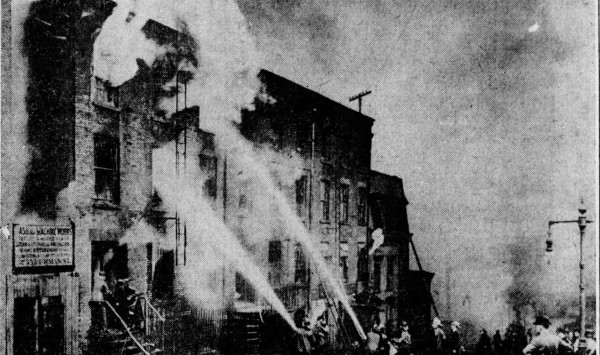
The Jehovah’s Witness complex in Downtown Brooklyn was once the scene of a roaring early morning 4-alarm fire that threatened to destroy the vast warehouse district that existed there in 1907. Sitting along the waterfront at the location of the fire – on both Columbia Heights and Furman Street – was a cork company, a coffee roasting factory, and an ice plant. SAVING THE WAREHOUSES It is not known where exactly within the complex the fire broke out, but it was determined by many of the residents of the district that the aroma of burnt coffee and cork did not make for a attractive combination that morning. The “oily reek of cork” was in the smell of the smoke throughout the morning, while roasted coffee – roasted twice over – brought residents to realize which warehouses were caught within the conflagration. The buildings in the picture above sat on what is now the Jehovah’s Witness compound and comprised a number of private homes that were still existent within the old warehouse district. Among them was “a frame house of the old style sort, two stories in height, with a mansard roof for an attic.” And in that building Catherine O’Neill, 50, and her bedridden sister, Agnes O’Neill, 65, both former “schoolma’rms,” feared for their lives. SAVING THE SCHOOLMARMS Patrolman Keating, who sounded the alarm, grew concerned as their building was shrouded in black smoke. No one had seen the two women that morning, and he “feared that something had happened to them.” So, […]
THE GREENEST BLOCK IN BROOKLYN (1902)
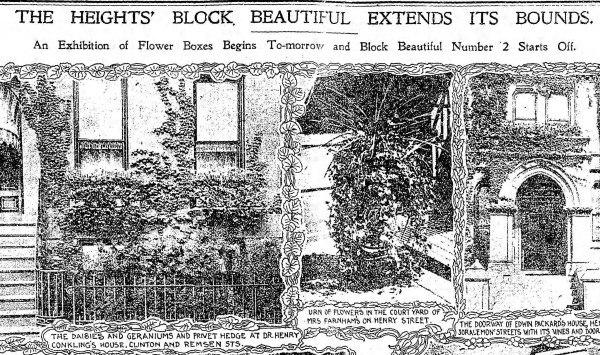
******************************************************************************************************************************** Brownstone Detectives investigates the history of our clients’ homes. The story you are about to read was composed from research conducted in the course of one of those investigations. Do you know the history of YOUR house? ******************************************************************************************************************************** As the judging for this year’s “Greenest Block in Brooklyn” award heads into its final round, we bring you a history of the concept of beautifying and greening neighborhoods in the borough of Brooklyn. A BRIEF HISTORY OF BLOCK BEAUTIFICATION IN BROOKLYN Before the Botanic Garden arrived on the scene with its “Greenest Block in Brooklyn” initiative in the 1990s, there was “Block Beautiful.” A number of private Brooklyn citizens, wishing to bring about the greening of their neighborhood, initiated an organized effort to stimulate an active interest in its residents utilizing their green thumbs to good effect. This earliest organized “block beautification” project began somewhat simultaneously in 1902 on two separate streets and section of the borough – Henry Street (in Brooklyn Heights) and on Quincy Street (in the Bedford Section). Led by Miss Zella Milhau of 291 Henry Street, the effort was called “Block Beautiful,” and was an initiative to “green” the block upon which she and her family lived, with the hope that this effort would be replicated throughout the city. Milhau, an artist and active member of the Municipal Art Society and the Fine Arts Club of Manhattan, who lived in the Columbia Heights section on Henry Street between Joralemon and State streets, originated the idea and got […]
“GROUND TO PIECES” IN THE CUT (1914)
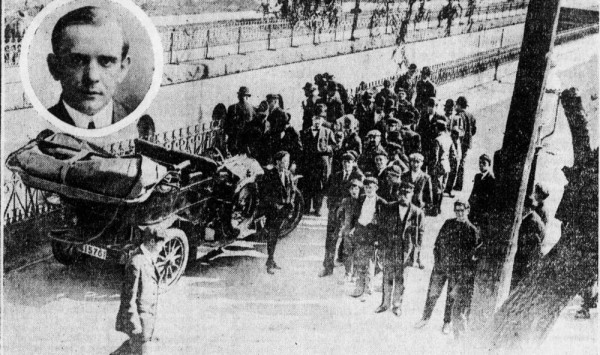
Martin Conly was the first to die by the cut in 1908. He and a boyhood “chum” were back from Coney Island at about 1 a.m. when the automobile they were traveling in ran into the low iron guard rail. Conly, the son of a prominent Brooklyn Democratic ward leader, was thrown from the vehicle and onto the tracks below. He was killed instantly. The Long Island Rail Road, which was not held accountable in court for the death, would later remove the light iron fencing and replace it with a thick concrete wall to prevent the same thing from happening again. Just a month later, though, before they could eradicate the danger – it happened again. Five young men, enjoying a “joyride” in a “large touring car,” heading north on Howard Avenue toward Atlantic Avenue, plunged into the wide trench and landed on the tracks “25 feet below,” just as a train was scheduled to pass. It was 2:10 a.m. It wasn’t until 27 December 1914, though, that an automobile would plummet into the cut while a passing train “ground to pieces” a man and his automobile. It had been traveling south on Howard Avenue towards Atlantic Avenue, when it crashed into the iron fencing. Unfortunately, the Long Island Rail Road had not found it necessary to build the same type “re-enforced” concrete wall on the north side of the cut (as it had on the south). MITIGATING THE CUT Today, the mitigation is noticeable – but just barely. […]
STRAIGHTENING A CROOKED CHURCH (1904)
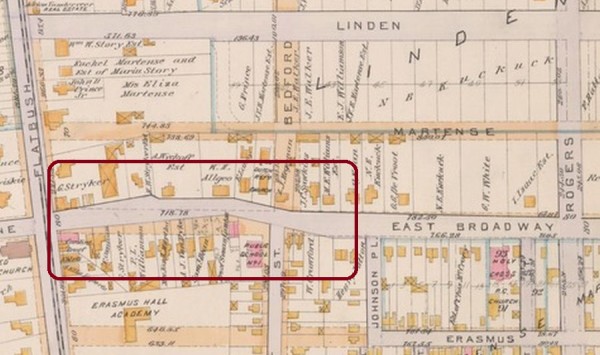
******************************************************************************************************************************* Brownstone Detectives investigates the history of our clients’ homes. The story you are about to read was composed from research conducted in the course of one of those investigations. Do you know the history of YOUR house? ******************************************************************************************************************************* “You can’t drive straight down a crooked road.” So goes the old saying which implies the difficulty of staying the course in precarious surroundings. And the saying proved to be of true portent in the center of Flatbush in 1904. BUT TO BEGIN AT THE BEGINNING… Before the Town of Flatbush was unceremoniously subsumed into the City of Brooklyn, it was still a rustic expanse of farmland, dirt roads, and farmers. When that great event happened in 1894, one of the challenges Brooklyn faced – which Brooklyn had taken on some 50 years earlier itself – was making the Flatbush roadways congruent with the rest of Brooklyn’s streets and avenues. This challenge would prove to be even more decidedly troublesome as the Department of Streets began to study the lay of the farmlines which made up the old town. Nearly all of them – in the 1600s – were set at an angle. CROOKED CHURCH One of the roadways which ran alongside several of these farms was Church Avenue. Church was named after the Flatbush Reformed Protestant Dutch Church, which sat at the corner of Church and Flatbush avenues. As Church Avenue (formerly East Broadway) passed Flatbush and moved in an easterly direction, the avenue, according to a current newspaper article, […]